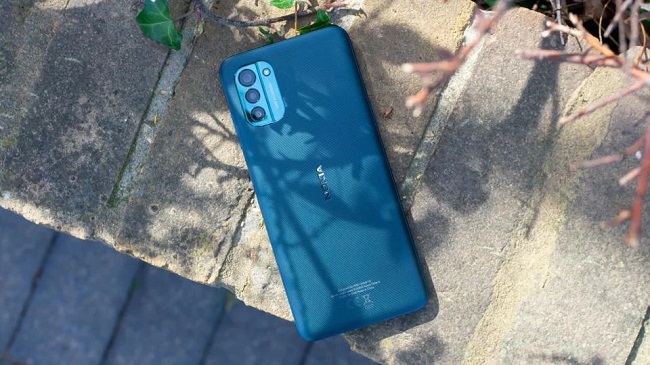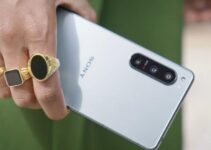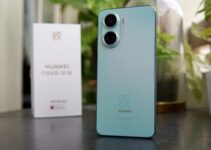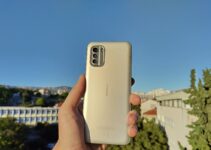The Nokia G21 is a cheap 4G Android phone that could make a lot of sense if you want to go SIM-free and put a stop to forking over a lot of money every month for mobile service.
While we’re always interested in new Android devices, the Nokia G21 falls short of the competition. The screen is far too lacklustre in comparison to competing headsets. Every time you take your phone outside, you’ll probably notice this.
All You Need To Know Nokia G21

The colours on the screen are a little washed out, which might not bother you if you’re into a low-key vibe. The Nokia G21 isn’t 5G compatible since it uses a peculiar Unisoc CPU. This phone’s speaker isn’t very loud or full-sounding, and it doesn’t do a great job of handling graphically intensive games.
The camera on the Nokia G21 might be much worse. It captures photos with decent enough colours and sharpness to be usable during the day. The G21’s rear camera, however, is less impressive than it seems at first glance because it only supports a single shooting mode and a single “zoom style.”
The Nokia G30 lacks the ultra-wide camera found on its predecessor, the Nokia G20. The Nokia G21’s battery life is the phone’s only real standout feature. HMD Global, the company responsible for creating new Nokia phones, claims that this model may survive for three days on a single charge.
These observations lead us to conclude that a timeframe of nearly two days is more reasonable. That’s still fantastic, though.
Read Also:
- All You Need To Know iPhone 13 Pro Max
- All You Need To Know Samsung Galaxy A14 5G
- All You Need To Know Samsung Galaxy S21 FE
Nokia G21 Price and Availability
- New and available in the UK and Oz!
- Price tag of £149.99/AU$299 ($200 approx.
In February of 2022, Nokia introduced the G21 and the much more affordable G11. If you’re just searching for a simple phone, you might want to try the second option, which is similar but has a lower-end camera.
The G21 costs $149.99 (GBP) or $299 (AUD), or about $200 (USD), but isn’t sold in the US at this time.
Design:
- Hard plastic shell with ridges for better grip.
- In this financial context, a realistic approach is highly effective.
- Fingerprint reader positioned on the side
There is a commendable honesty to Nokia’s entry-level designs, even if a cheap phone like the Nokia G21 will never fool anyone into thinking it’s a high-end device. The Nokia G21’s back is made of a softly ridged plastic and makes no attempt to mimic the look of metal or glass from afar.
Due to the lack of a light-sensitive layer, its overall appearance is muted. Also, the textured back effect improves stability. With the prior version, Nokia used a circular housing for the camera. The Nokia G21 has a smaller, less obtrusive rounded rectangle in one corner.
The G21 doesn’t provide anything particularly exciting, but it does have a few interesting characteristics. The Nokia G21, unlike its predecessors, does not feature a punch-hole camera. The fingerprint scanner, which is located on the device’s side, works reliably and, while slower than that of a mid-range Android, is in keeping with the device’s overall rhythm.
The Nokia G21 has a single speaker placed at its bottom border. Compared to a stereo pair, it clearly provides a weaker sound area and is not very loud. The speakers on this device aren’t very good, especially in comparison to the inexpensive smartphones you can buy today.
Display:
- Outdoor visibility is impaired because to low peak brightness.
- Refreshing at 90 hertz
- 720p is less than the competition’s 1080p.
On paper, the Nokia G21’s 6.5-inch LCD display is exactly what we’d expect to see in a low-priced smartphone. Unlike higher-end smartphones, this one doesn’t have a 1080p display. In 2022, though, even budget screens can be impressive. But alas, that is not the situation here.
While the Nokia G21’s 90Hz refresh rate helps menus appear to scroll more smoothly, slight UI judder still occurs frequently and detracts from the screen’s otherwise subpar performance. Compared to OLED phones and even many LCD-based machines that cost slightly more, the colour depth is very much “sRGB,” leaving something to be desired.
You may disagree with us on this, but after reviewing smartphones and their cameras for several years, we’ve learned to like a more muted aesthetic. The panel naturally produces cold colours, with whites that lean more blue. The Settings tab, however, makes it possible to change this. It looks better, in our opinion, with the warmth slider turned up.
On the other hand, the Nokia G21’s main problem is its lack of brightness. Taking the phone outside to take pictures, we could hardly make out anything on the preview pane. The phone’s screen lacks the maximum brightness necessary to maintain a usable image in bright environments.
To Nokia’s credit, it did state as much. Unlike low-cost smartphones with high brightness modes that automatically activate when there’s plenty of light, this one’s screen is only rated for 400 nits of brightness. A brightness of 400 nits is more appropriate for a laptop than a smartphone.
The displays on the Realme and Xiaomi phones are superior. The Xiaomi Redmi 10 has better colours, a better resolution, and a brighter maximum. We consider 600 nits or more of brightness to be the bare minimum for a genuinely adaptable phone display, but it may cost a little extra to get that.
Software and Performance:
- Pleasantly minimalistic design
- Simple navigational hiccups
- Dismal gaming results
The Nokia G21 uses Android 11, the previous generation of the software. This phone could benefit from the newer Android 12, which includes a number of aesthetically pleasing modifications (such as a more colourful menu layout).
For what reasons might the Nokia G21 gain? The software it uses is unusually pristine. There are no unnecessary programmes or disputed additions to the user interface. This is typical Nokia; the company has long been a leading advocate for “bare Android” projects like Android Go and Android One.
While we appreciate a tidy user interface, we’ve found that third-party skins from the vast majority of manufacturers do the trick just well. You may use the touchscreen or the traditional soft keys to navigate the system, just as on other Nokia phones.
The Nokia G21’s performance slightly lessens the phone’s appeal, despite the phone’s clean OS. It’s not a sluggish disaster, but the interface judders occasionally, games take a bit to load, and more complex websites take a while to load in their whole. While waking a sleeping phone, there is often a delay of several seconds.
While this doesn’t destroy your experience with the Nokia G21, it does show that the performance gap between inexpensive Android phones and higher-end variants is narrowing. The T606 Unisoc CPU is used in the Nokia G21, which is a bit of an outlier. Only budget phones like the Samsung Galaxy A03 and the downgraded Nokia G11 use this basic Chipset.
Its 1165 Geekbench 5 score is significantly lower than the 1640 that can be achieved by a Snapdragon 480-powered smartphone. That’s a Qualcomm 5G modem, one of their more affordable options. This low-end processing capability, along with the phone’s internal storage, which can only read/write at speeds of roughly 120MB/second, will result in some lag when using programmes that haven’t been preloaded into RAM.
Our Nokia G21 model only has 4GB of RAM, so it can’t afford to put a lot of things in “quick recall” memory. The Nokia G21’s performance is unimpressive, but it is in line with what we’d expect from a budget smartphone.
Yet, its potential effects in the real world should be taken into account. Despite having 4GB of RAM, Fortnite will not install on the Nokia G21 and stating that the device was not supported. At its most graphically intensive, Ark: Survival Evolved resembled a slideshow.
We had to lower the graphics to “low” and the resolution to something more akin to a PS2 game in order to get it to a playable speed. Asphalt 9 by Gameloft performed noticeably better. Even with “high” graphical settings, the frame rate wasn’t ideal, but the game was still playable.
Several ostensibly more capable phones perform poorly in the game, suggesting either optimisations were performed by Gameloft or the 720p version of the game is less demanding than the 1080p Android version.
Cameras:
- Images have a hazy quality and lack fine detail.
- Excellent HDR for everyday pictures and self-portraits alike.
- Poor quality video.
The Nokia G21’s camera is the primary selling point over the Nokia G11. The principal sensor on the device is 50 megapixels, the resolution du jour as evidenced by the Samsung Galaxy S22 and other high-end smartphones. Obviously, this sensor is not up to par with the ones found in modern smartphones.
Samsung, in its usual form, has produced a stripped-down version of a trending product at an affordable price. Yet, the Nokia G21’s camera is respectable for a budget phone. When shooting in natural light, it produces photographs with a colour temperature that leans slightly towards warmth, good HDR processing, and colour that, while perhaps a little “one note,” feels natural enough.
Despite the fact that the Nokia G21’s dim screen made it difficult to frame our photographs, we were generally happy with the end result. What you shouldn’t anticipate, though, is the level of information promised by the high-res sensor.
The quality of photographs captured by the Nokia G21 drops off noticeably when zoomed in. Close examination reveals some softness at the pixel level, especially in thick textures like the leaves of faraway trees.
This is a prototypical example of the results obtained by a small pixel-binning sensor, which combines many sensor pixels into a single output pixel. Using the 50-megapixel setting doesn’t make a huge difference, either. Also, the HDR mode seemed a little erratic, so keep that in mind.
If you take two photos of the same scenario a split second apart, the Nokia G21 may incorrectly expose the highlights in the first one, but get it just right in the second. We can’t help but wonder if the camera shortens or simplifies the image processing stage when you snap many images in quick succession.
The Nokia G21’s tiny sensor prevents it from taking great photos in low light, but we were expecting them to be even worse. To boost detail in the darkest sections and the clarity of detail in the brightest parts, there is a dedicated Night mode that takes between one and two seconds to shoot an image.
We’re still a long way off from becoming as good as a fantastic night-time shooter, but at least we’re not terrible at it. The Nokia G2’s 2x zoom feature isn’t useful, so please don’t use it. The lack of a zoom lens in this phone makes digitally enlarging photos even worse than they already are.
What are the other two cameras on the back for therefore, if there is no zoom? There is a mediocre 2-megapixel macro camera and a simple depth sensor for out-of-focus backgrounds in selfies. Like regular photographs, selfies can turn out surprisingly well thanks to high dynamic range (HDR).
Taking a selfie in front of a bright window indoors won’t be a problem for the Nokia G21 because it does a decent job at adjusting the image’s brightness. The level of detail isn’t particularly impressive, but the software itself is impressive.
The video quality, however, is terrible. Just 1080p footage may be recorded, no software stabilisation is available, and the final product seems closer to 360p than 1080p. The Nokia G21’s camera has its advantages and disadvantages, making it just “OK” overall. You might be pleased with the results if you don’t have high hopes for the camera and don’t intend to record video.
Read Also:
- All You Need To Know iPhone 13 Pro
- All You Need To Know Sony Xperia L5 5G
- All You Need To Know Sony Xperia 5 IV 5G
Battery Life:
- The battery life is sufficient to permit daily charging.
- Using the included charger is a long process.
- Charges at up to 18W
The Nokia G21’s large 5,050mAh battery is said to provide up to three days of use before needing to be recharged. Considering the usual optimistic claim we hear is that it can be used for two days, this is a huge one.
Although such a long life span is unrealistic for the average person, real-world endurance is still quite high. Even with heavy texting and photography use, the Nokia G21 only needs to be charged every other day.
A full charge will last you just over seven hours, and thirty minutes of high-end gaming will use 7% of the battery. This is fantastic, again again. Yet, the Nokia G21’s slow charging time is a major downside. The included 10W charger is disappointingly slow despite the phone’s respectable 18W charging support.
The process of charging the phone will take at least three hours. That’s good for overnight charging, but you’ll need a higher powerful charger if you want to quickly top off your battery.


